Ayasuluk Hill in Selcuk: Why You Shouldn’t Skip This Historic Wonder
Ayasuluk Hill, located in the Selçuk district of Izmir, is one of the rare regions of Anatolia that has been inhabited uninterruptedly from prehistoric times to the present day. This hill, which is one of the most important archaeological and cultural heritage sites not only in Izmir but also in Turkey, has a wide range of history from mythology to Christianity, from Byzantine to Ottoman. Today, Ayasuluk Hill, which is part of the ancient city of Ephesus, a UNESCO World Heritage Site, promises its visitors a deep spiritual and intellectual discovery.
The Deep History and Cultural Significance of Ayasuluk Hill

The history of Ayasuluk Hill dates back to 8,000 BC. Archaeological excavations have revealed traces of Neolithic settlements in this region. This means that it is not just a mound, but one of the oldest and longest-inhabited settlements in Anatolia.
The settlement established here in the Early Bronze Age is considered to be the first nucleus of historical Ephesus. It is believed that the city of Apasas, mentioned in Hittite texts, was also located here. Apasas was the capital of the Arzawa Kingdom and had close ties with the Hittite Empire. This period saw the region become an important gateway for trade and culture between Anatolia and the Aegean coast.
During the Hellenistic period, the importance of Ayasuluk Hill seemed to decline with the rise of Ephesus, which was moved closer to the coast, but this did not last long. With the Roman Empire's acceptance of Christianity, the region regained its importance. The belief that the tomb of St. John, one of Jesus' apostles, was located here turned the region into a pilgrimage centre.
A Geography Woven with Mythology, Beliefs and Legends
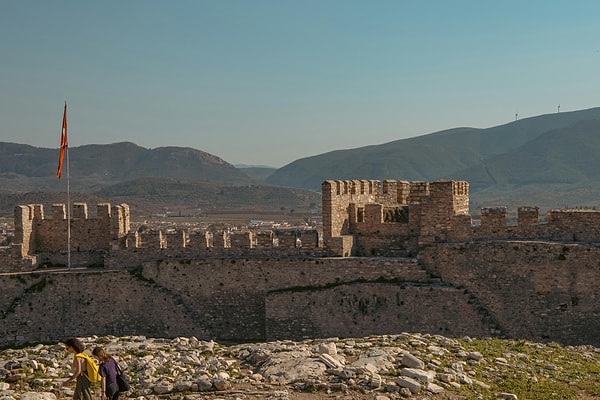
The history of Ayasuluk Hill has been shaped not only by excavations but also by folk tales, religious texts and the accounts of ancient writers. Ancient historians such as Strabo and Herodotus refer to this region as ‘the land of the Amazons.’ According to legend, the city of Ephesus was founded by the Amazon queen Smyrna. Such mythological connections indicate that the region was not only a military or commercial centre but also a symbolic and sacred one.
The name Ayasuluk probably derives from ‘Hagios Theologos,’ meaning ‘Holy Theologian’ (Saint John). This further reinforces the hill's status as a religious centre in the post-Christian era. The St. John Basilica, built by Byzantine Emperor Justinian in the 6th century, is an architectural reflection of this belief.
Places and Structures Worth Seeing on Ayasuluk Hill
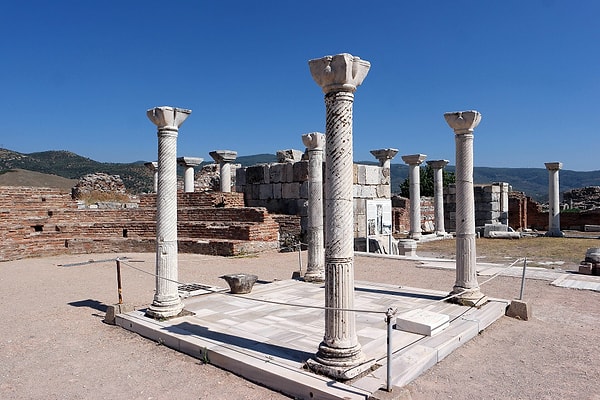
St. John Basilica
Built over the tomb of St. John, this magnificent basilica is an example of classical Byzantine architecture with its cross-shaped plan and dome. The remains of the basilica are still impressive; the massive columns, mosaic floors and apse area are clearly visible. Once a pilgrimage centre, this structure highlights the religious identity of Ayasuluk Hill.
Ayasuluk (Selçuk) Castle
Located at the top of the hill, this castle has a mixed architectural style due to additions made in different periods. Towers, bastions and inner castles from the Byzantine, Aydınoğulları and Ottoman periods are noteworthy. The wall system, surrounded by 15 towers, was used for both defence and observation purposes at the time. Numerous details can be examined in the castle, such as palace ruins, inner courtyards, cisterns and dungeons.
Byzantine Monastery Ruins
Located on the western side of St. Jean Basilica, between the hill and Isa Bey Mosque, these ruins provide information about early Byzantine monastic life. Often overlooked, these ruins are a hidden gem for the attentive observer.
Ayasuluk Hill Today – Visitor Guide
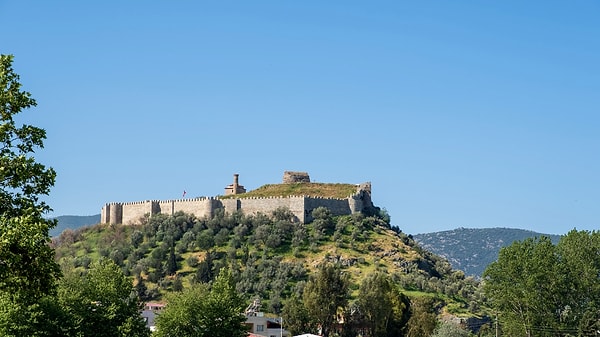
Today, Ayasuluk Hill has been made extremely suitable for visiting with its restored buildings and walking paths. Information signs, brochures and guided tours are available for visitors. Visits in the morning or at sunset allow you to witness both the impressive play of light and the panoramic view of Selçuk.
Visiting Hours
Opening Hours: 08:00
Closing Hours: 18:00
Box Office Closing Hours: 17:30
Entrance Fees (as of 2025)
St. Jean Basilica: Approximately 130 TL for local tourists, 6 € for foreign visitors. The MuseumPass is valid.
Ayasuluk Castle: Approximately 130 TL. Entrance is free with the MuseumPass.
How to Get to Ayasuluk Hill?

Ayasuluk Hill is approximately 70 km from Izmir and is easily accessible. You can take the IZBAN suburban train from Izmir directly to Selçuk station. Ayasuluk Hill is only a 10-minute walk from the centre of Selçuk.
For those arriving by intercity bus, Selçuk Bus Terminal is in a very central location. Those arriving by private vehicle can reach Selçuk in a short time via the D550/E87 highway. There is a parking area at the foot of the hill.
Other Places Worth Visiting in the Surrounding Area
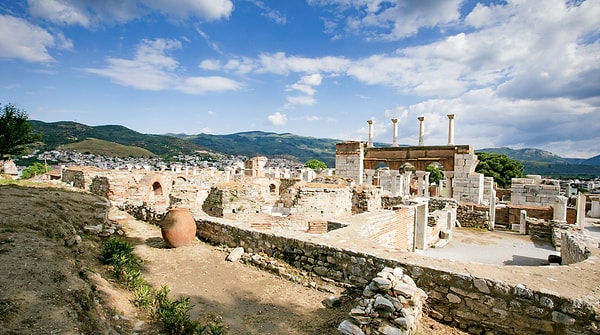
The area around Ayasuluk Hill is like an open-air museum. History and culture enthusiasts would do well to spread their visit over several days.
Ephesus Ancient City: Located 2 km southwest of Ayasuluk, it represents the pinnacle of the ancient world with structures such as the ancient theatre, the Celsus Library, and the ruins of the Artemis Temple.
Temple of Artemis: One of the Seven Wonders of the World, this structure is unfortunately represented today by only a few columns, but its impressive atmosphere is still preserved.
Isa Bey Mosque: This mosque, belonging to the Aydinogullari period, is one of the rare examples of pre-Ottoman Turkish art with its original architecture.
Ephesus Archaeological Museum: This museum, where the excavated artefacts are exhibited, is a binding archive for both Ayasuluk and Ephesus.
House of the Virgin Mary: According to Christian belief, this sacred area, where the Virgin Mary spent her last years, is a pilgrimage point and attracts a large influx of visitors.
Şirince Village: Located about 8 km away, this village is worth seeing with its historical Greek houses, wines and traditional market.
Suggestions and Extra Information
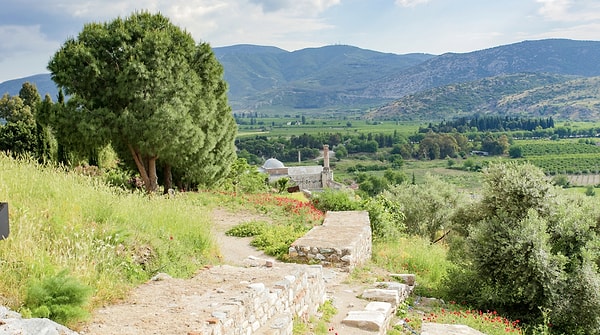
Ayasuluk Hill can be quite hot in summer. Be prepared with sun cream, a hat and plenty of water.
Since the area is large, choose comfortable shoes.
The view of the Selçuk Plain from Ayasuluk Castle at sunset is impressive. It is an ideal time for photographers.
Prehistoric figures, Mycenaean statuettes and bronze artefacts found in Ephesus excavations are exhibited in the Ephesus Museum. For those who want to see the prehistoric value of the hill, this museum should definitely be visited.
Guided tours are very informative, especially for families with children or those with academic interests.
Keşfet ile ziyaret ettiğin tüm kategorileri tek akışta gör!

Send Comment